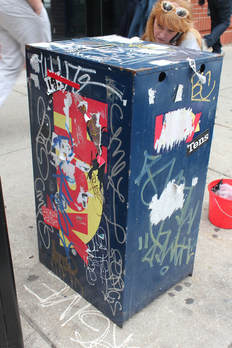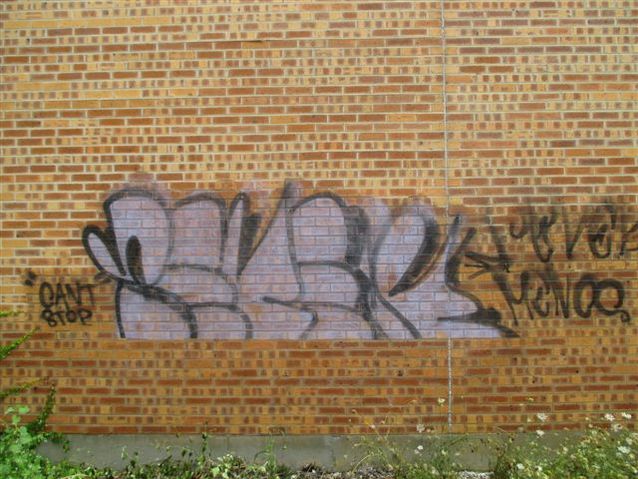Graffiti, though often artistic and expressive, can quickly become a nuisance when it appears in the wrong places. From public buildings and transportation hubs to private properties and businesses, unwanted graffiti creates a perception of neglect and can lower the visual appeal of an area. Many cities and communities invest time and resources into removing graffiti promptly to maintain cleanliness, order, and public safety. But while the goal is to eliminate the graffiti, the process should not damage the underlying surface. This is where choosing a safe graffiti remover becomes critical.
The Challenge of Graffiti Removal
Removing graffiti is not a one-size-fits-all task. Graffiti can appear on brick, concrete, wood, metal, glass, and plastic — each requiring a unique approach. The type of paint or marker used also impacts how difficult it is to remove. Using the wrong method or chemical can strip paint, stain surfaces, or leave ghosting — faint remnants of the original graffiti. In some cases, harsh chemicals used to strip graffiti can pose health and environmental hazards.
That’s why many city maintenance crews, property managers, and cleaning contractors are turning to more mindful solutions that balance efficacy with safety. The right safe graffiti remover can make a world of difference, cleaning thoroughly without compromising the surface or the safety of the people and environment.
Characteristics of a Safe Graffiti Remover
A safe graffiti remover is one that effectively dissolves or lifts graffiti markings while preserving the original substrate. It should be non-toxic, biodegradable, and free from harmful volatile organic compounds (VOCs). Below are key features to look for:
-
Surface-Safe: It should work on a variety of surfaces without causing fading, discoloration, or corrosion.
-
Environmentally Friendly: It should break down naturally without polluting waterways or air.
-
Non-Flammable: Safer for transport and storage, especially in community and public service settings.
-
Low Odor or Odor-Free: Important for use indoors or in areas with high foot traffic.
-
Effective on Multiple Marking Types: Whether spray paint, ink, or permanent markers, it should be versatile enough to handle most forms of graffiti.
Choosing a product with these attributes ensures that graffiti can be removed safely, quickly, and without additional cleanup.
Application Methods
Using a graffiti remover safely also involves proper technique. Whether dealing with a large mural or a small tag, the application process typically includes these steps:
-
Testing First: Always spot-test the remover in an inconspicuous area to ensure it won’t harm the surface.
-
Applying the Product: Use a brush, spray bottle, or sponge to apply the remover to the affected area.
-
Allowing Dwell Time: Let the product sit for several minutes to break down the paint or ink.
-
Agitating the Surface: Light scrubbing with a soft-bristle brush helps lift the markings.
-
Rinsing Thoroughly: Wash away the remover and dissolved graffiti with water — preferably with low-pressure equipment to avoid damage.
-
Repeating If Needed: Some stubborn markings may require a second application.
Wearing gloves and goggles is recommended for safety, even when working with environmentally responsible products. Good ventilation is also important when working indoors.
Surfaces Commonly Affected by Graffiti
Understanding the types of surfaces where graffiti typically occurs can help choose the right product and removal approach. Each surface reacts differently to solvents:
-
Brick and Masonry: These porous surfaces often absorb paint, making graffiti harder to remove. A remover with penetrating capabilities is ideal.
-
Metal and Glass: Non-porous and easier to clean, but they can be scratched if abrasive tools are used.
-
Painted Surfaces: Care is required to avoid stripping the base layer of paint while removing the graffiti.
-
Wood: Softwoods are prone to damage, so gentler formulas are preferred.
The goal is always to lift the graffiti without affecting the original texture, color, or integrity of the surface.
Avoiding Common Mistakes
Many people make the mistake of using abrasive materials, such as wire brushes or sandblasters, on delicate surfaces. These methods can cause irreversible damage. Likewise, using solvents not designed for graffiti can create toxic fumes or leave behind unsightly chemical burns.
Another common error is delayed removal. The longer graffiti remains, the more it can penetrate and stain the surface. Prompt action not only makes removal easier but also deters future vandalism by signaling that graffiti won’t be tolerated.
Importance of Community Action
Addressing graffiti isn’t just about aesthetics — it’s also about community pride and safety. Neighborhoods that respond quickly to graffiti show that they care about their surroundings. This can help deter future vandalism, increase property values, and foster a sense of civic responsibility.
Many cities have implemented graffiti abatement programs, working with local volunteers and maintenance teams to address graffiti in public spaces. Using a safe graffiti remover supports these programs by making it possible to act swiftly and responsibly
Maintenance and Prevention Tips
Once graffiti is removed, there are steps that can help prevent it from coming back:
-
Protective Coatings: Anti-graffiti coatings create a barrier on the surface that makes future removal easier.
-
Improved Lighting: Well-lit areas are less likely to be targeted.
-
Landscaping: Strategically placed plants or fences can deter access to graffiti-prone walls.
-
Surveillance and Monitoring: Security cameras or signage indicating surveillance can discourage vandals.
By combining a thoughtful prevention strategy with the right tools, property owners and public service teams can maintain clean, graffiti-free spaces.
Sustainable Solutions for a Cleaner Future
As more individuals and organizations become aware of the environmental and health impacts of traditional chemical cleaners, the demand for eco-conscious alternatives continues to grow. A safe graffiti remover not only protects the environment but also ensures the safety of the people applying it and those who frequent the cleaned area.
Municipalities, schools, transport authorities, and private companies all benefit from products that align with broader sustainability goals. In the long term, these choices contribute to cleaner, greener communities.
At the heart of every successful graffiti removal strategy is the commitment to do no harm — not to the surface, not to the environment, and not to the community. The shift toward safer, more sustainable removal methods marks a positive step in responsible urban maintenance.
Clean City Innovations LLC supports these efforts by encouraging the use of advanced solutions that protect both public spaces and the planet.













